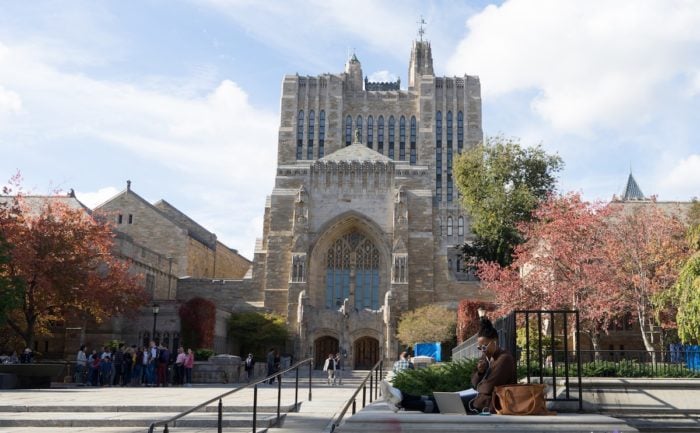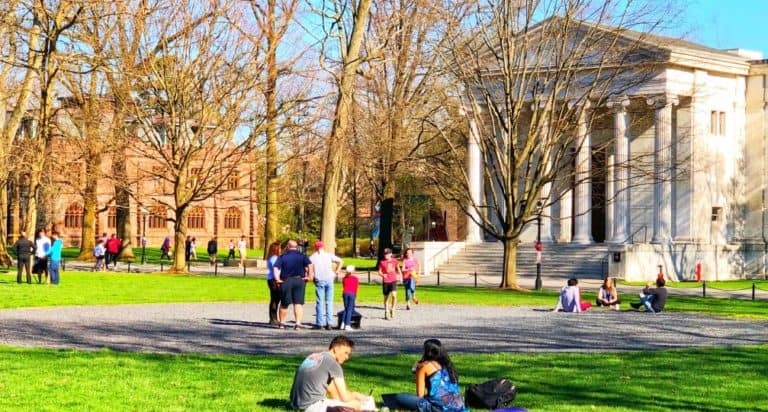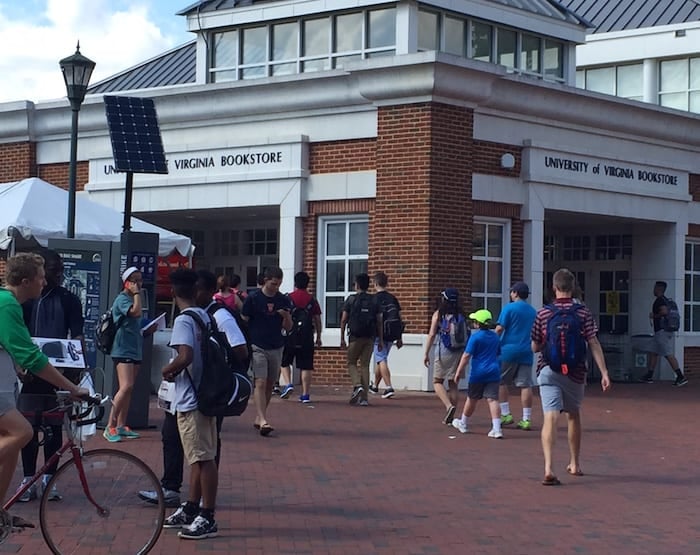When my daughter started her college search, I joked that there were three parts to the college admissions process: the visiting, the applying, and the leaving. We found the first part, the visiting, mostly exciting and fun. Applying was busy and sometimes stressful. Part three, the leaving, well…it has been forty-two days since college drop off, but who’s counting?
I worked in higher education for over 20 years. In my various roles, I spoke at countless recruitment events, read hundreds of essays, and reviewed numerous transcripts, but over the past two years, I got to experience the process from the other side. As a parent with a background in academic advising and student life, I felt confident that my perspective would be valuable, but I quickly realized that it was essential to develop a few strategies (and even make a few rules for myself) to ensure a fruitful visit.

BEFORE Your College Visit:
1. It is important to visit a college while classes are in session.
Visiting a college without students on campus is a visit to see a bunch of beautiful (or not so beautiful) buildings. The best way to get a feel for the campus vibe is to plan your visit while the current students are at school. Of course, if you need to return to the campus for an interview or second visit, you can visit over the summer, but for an initial visit, it is best to see a college during a regular semester.
2. Take a few minutes to go through your child’s high school calendar and write down all of the days that school is closed between September and May.
Although work and life schedules can be complicated, try to schedule a few visits during those weekdays. Your child should also ask a guidance counselor about the school policy and procedure for missing school to go on a college visit or interview. Most high schools allow for, at least, a few absences in the junior and senior year for college visits.
3. Make a plan.
If you have nearby schools on the list, take day trips. Use longer breaks for schools that are farther away and, obviously, group nearby schools together. If you’re planning to drive to school visits and your child has a permit, share the driving. Longer drives are great practice for new drivers and leave plenty of time for bonding and making memories.
4. As soon as you have a date for a visit, reserve your spot for a tour and an information session.
Many schools allow you to make reservations online. Others require a call during business hours or an email. After you get a confirmation, be sure to print it along with any other important information such as parking passes or special directions.
5. Plan for an admissions interview.
If your child is planning to have an admissions interview or an individual meeting with a coach or professor, encourage your student to bring a transcript, resume, and any other relevant materials.
THE DAY OF your College Visit:
6. Leave early to get there early.
7. Parking
When you arrive at the school, find the admissions office and figure out where you will park. Admissions parking lots can be difficult to find, and they are also sometimes full. Overflow parking lots are typically even harder to locate.
8. Then park and walk (or drive) somewhere to get a snack.
If you prefer to bring food and find a spot to eat it on campus, that works too. For my family, it was crucial to refuel before the visit started because getting “hangry” half way through the tour is definitely not productive.
9. Listen carefully to the information session.
What do they highlight? What do they leave out? Do they involve current students in the presentation? Is it casual? It is professional? Is it crowded? If this isn’t your first college visit, how does it compare to previous information sessions?
10. Let your child take the lead.
Encourage your student to check in upon arrival. At any point, if you or your child have questions, let your child ask the question.
11. During the tour, stay near the front.
Let the students interact with the tour guide and ask the questions. Some schools even separate parents and children for the tour, and some schools let you choose your tour guide after the guides introduce themselves. Notice these types of choices by the admissions office. What do those choices say about the college?
On the tour, what do they show you? What don’t you see? I, personally, was always slightly suspicious when a school did not show you the inside of a residence hall. Unless your child plans to commute, the residence halls are a big part of the student experience. Pay attention to the other students that you pass along the way. Do they look happy or stressed? Is the tour guide prepared? Does the student share personal anecdotes during the tour?
12. Tour guide
Watch how the tour guide interacts with current students as you walk around campus. Do other students say hello to the tour guide?
13. Photos
Along the way, take a few photos or make a few notes to help you remember the visit. After a while, campuses start to blur together. Without notes or photos, you’ll end up saying “Wait, which was the school with the beautiful dining hall and the really good cookies?”
14. Dining hall
If you get an opportunity to eat in the dining hall, take it. Eating with your family in the dining hall as a prospective student is uncomfortable, but it is definitely worth it. Observing the student body during a meal will give you a wealth of information. The dining menu can also provide insights on how they deal with a wide variety of dietary needs. Discussing the value of this opportunity in advance gives your child a bit of time to adjust to the idea.
AFTER your College Visit:
15. After the visit, Let your child share impressions first.
My husband instituted this rule for our family. As a former college dean, I was bursting with opinions after each visit. Yet letting my daughter speak first was vital. As much as I wished that I was off to college again, I occasionally needed a reminder that this was her journey.
16. Thank-you notes
During the visit, if your child met individually with a staff or faculty member, your student should be sure to get the person’s full name and email. When you return home, encourage your child to send a short thank you note.
I hope these tips will help you have many successful college visits. Remember to enjoy step one of your child’s college admissions process because, for many parents, the applying, packing, and leaving is markedly less fun.
You’ll Also Love Reading:
Questions to ask on a Campus Visit









